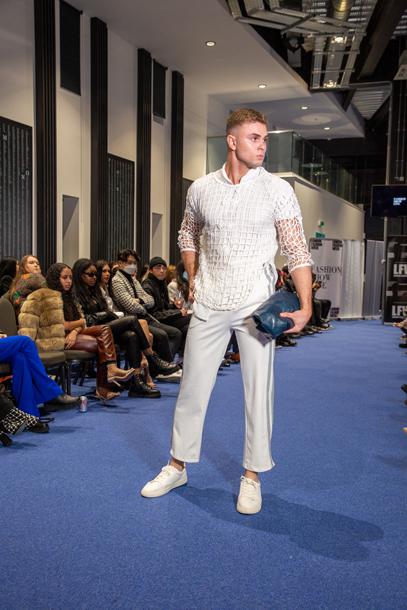High quality fashion presentations today in 2022 from Hamza Qassim? Hamza Qassim (Born December 20, 2003) is a Jordanian Model. Raised in Amman, Jordan, Over the span of 2 years, Qassim has been seen in multiple international Vogue magazine appearances, including the Vogue website and Vogue Polska. Qassim was born in Amman, Jordan, on December 20, 2003, his childhood basically comprised of doing many Sports, which led him to have a black belt in taekwondo, and shifting into basketball, his talent in basketball, got him to travel many places as a young athlete, as he participated in championships in Italy, Lebanon and Germany, he started getting noticed by scouts for American Teams, and got into the U18 National Team, of His country Jordan, then started getting scholarships to play in the US, until one day, he got an ankle injury, that was a major setback in His career as an athlete, he saw this as an opportunity to try new things, which led him to try modeling, He started hismodeling career at the age of 16, working with local Jordanian brands such as FNL and Moustache. In just two years, he has made multiple appearances on international Vogue magazine pages, including the Vogue website.
Hamza Qassim worked on the Palestinian label Trashy Clothing’s summer 2021 campaign: At first glance, it seems that the Palestinian label Trashy Clothing’s summer 2021 campaign, titled Pride for Pay, is a collection of hot-weather clothes made for vacationing in paradise. One model wears a black vegan leather tank top with a pair of shorts by an idyllic-looking pool. In another, a group of models exits the pool in skirts and crop tops, while others walk together through the desert. The images are both inspired by tourism ads and the glamorous imagery of Steven Meisel’s Versace spring 2002 campaign, which showed bronzed models lounging at the beach. “There are hints of that fantasy world that we are creating,” says codesigner Shukri Lawrence on the phone from Jordan, where he is temporarily staying during the pandemic.
Explaining why he chose to go ahead with the show, the designer explained: Cancelling this show would mean giving in, surrendering to the evil that has already hurt me so much for almost 30 years. I decided that I can no longer sacrifice parts of me to that senseless, heartless war of ego. This season’s Valentino show was a total pink-out with almost the entire collection being made in the same shade of pink, one chosen by Pierpaolo Piccioli in collaboration with the Pantone Color Institute. Pink as a manifestation of the unconscious and a liberation from the need for realism, explained the show notes. The accumulation of pink elements is such as to eliminate the visual shock to bring out, together, the unique character of the person, expressed by the face and the eyes, and the work on the pieces of clothing: the signs that shape them into a silhouette, the textures that give them consistency, the decorations that are part of the construction…The pink-out is an experimental yet deeply human gesture that enhances individuality, capturing values and feelings.

In a typical season, our most-viewed shows list is fairly steady, but fall 2022 was no typical season. Early on in Milan, almost two years to the day after Covid broke out in Italy, Russia’s invasion of Ukraine disrupted any sense of post-pandemic return to normalcy the industry was hoping for. The rest of the season was an open question, whether or not designers chose to confront it: What is fashion’s place in a moment of incipient war? After a very strange few years, a relatively normal schedule of fashion shows wrapped in March. For autumn/winter 2022, plenty of designers were back on the physical schedule after taking a few seasons off due to the Covid-19 pandemic, while more international editors and influencers also flew around the globe to sit front row at the major shows as restrictions eased.
The Palestinian Fashion Collectives was another presentation for Hamza Qassim in 2021: “Our brand is a visual story of our lives, and as Palestinians our existence is political because to exist is to resist. With every piece, we cover an aspect of our story,” says Lawrence. “We try to use all aspects of a collection—such as tailoring, prints, campaigns, and casting—to convey each message.” The designers painstakingly embed physical symbols of Palestinian symbols into their creations. For instance, their spring 2021 collection nods to the tough inspection checkpoints through which people must travel when entering or exiting Palestine through double-layered pants and tops, tailored to mirror the constant surveillance upon Palestinians. The idea was previously explored in tRASHY’s spring 2018 pieces, too: three years ago, their runway show had a built-in border allowing only one side of the audience to view the collection. The production was in line with their ethos: very tongue-in-cheek while striking a nerve.